Circadian lighting. Human-centric lighting. These are two terms that have come to the forefront of inter-industry discussion over the past 16 years. They are two very different terms that mean two completely different things. Yet, they are often interchanged as a result of confusion over their definition. What are they? What do they mean? What is the difference?
“Circadian lighting” can be defined as any lighting strategy or source that is “efficient in stimulating the circadian system” (Boyce, 2006). The circadian system is best described as your body’s master clock which tells you when to wake up and when to go to bed, among other things. “Circadian lighting” as a term came to prominence after the discovery of the intrinsically photosensitive retinal ganglion cell (ipRGC) in 2002 (Berson et al, 2002). The ipRGC is essentially a light-sensitive cell which informs physiological and psychological processes throughout the body. Without going into great detail, this novel photoreceptor was the last piece of a puzzle that effectively solved how the body’s clock functioned. In just a few short years, scientists were able to come to a rough conclusion as to how the circadian system responded to light in the built environment.
Determining how to incorporate this discovery into architectural practice has turned out to be far more difficult than what many anticipated. Seventeen years later, the lighting industry is still at odds with how to characterize this system in the form of a metric. This is no small task. For comparison, it took the United States 8 years to put a man on the moon. Seemingly overnight, a tiny photoreceptor flipped a multi-million-dollar industry on its head and put it at the forefront of neuroscience, drawing researchers from every corner of academia. To say “it’s rocket science” would be an understatement.
“Human-centric lighting”, on the other hand, is a relatively new term that is meant to encapsulate an idea that has existed in the industry for many years. It can be defined as “lighting devoted to enhancing human performance, comfort, health and wellbeing, individually or in some combination.” (Boyce, 2016). This definition implies that lighting impacts the human experience through more ways than vision alone. Human-centric lighting can therefore be used to describe and categorize any lighting strategy that aims to address a non-visual phenomenon in the body. Circadian lighting falls under that category.
However, this does not mean that lighting for vision and lighting for non-visual systems are mutually exclusive. In fact, they often aren’t. They commonly go hand in hand. Furthermore, human-centric lighting isn’t just limited to strategies that inform the body’s clock. There are dozens of other strategies and metrics that encompass human-centric lighting. Some examples include lighting for seasonal affective disorder, flicker prevention, glare metrics and effects on alertness. All of these are areas of human-centric lighting that exist outside of or tangent to the world of circadian lighting. A good illustration of this concept is the square and rectangle relationship whereas all squares are rectangles but not all rectangles are squares. In this analogy, the square represents circadian lighting while human-centric lighting is represented by the rectangle.
Another reason circadian lighting and human-centric lighting are often confused is because of the discovery of the ipRGC itself and the revelations that followed. It was initially believed that the photoreceptor was only responsible for informing the body’s clock. So even today, when many people hear “ipRGC”, they automatically assume that the discussion is centered around circadian lighting. When scientists later mapped the ipRGC to the body’s clock, however, they found that it also talked to other parts of the brain, many of which have nothing to do with the circadian system. We now know that the ipRGC informs other non-visual processes in the human body all of which relate to human-centric lighting despite having little or nothing to do with circadian rhythms.
Perhaps the most fascinating part of all of this is that the ipRGC still continues to baffle and surprise scientists. One notable surprise is that researchers have recently discovered how the ipRGC and other photoreceptors project to the part of the brain that affects mood and learning (Fernandez et al, 2018). This means that in a few years, we may have a definitive answer as to how lighting impacts our emotions. It will no longer just be a vague correlation between a specific lighting scenario and a specific temperament. We will hopefully have a road map that shows how this system works. One can only imagine the effect this will have on lighting and design in general.
Despite all of these fascinating advancements, the most important take away from this article should not be individual strategies or discoveries. Rather, one should understand that human-centric lighting is so much more than just circadian lighting and that we are only just now beginning to understand how this tiny photoreceptor has the ability to change the industry for the better. It is perhaps even more important to note that firms such as The Lighting Practice are prepared to deal with these changes and challenges head-on. Through the use of evidence-based design along with the utilization of consensus backed research and metrics, our work is proactive in implementing human-centric design strategies across all applicable areas of practice. Whether for the eye or the body, we are committed to providing holistic designs to our clients in a manner that both excites and inspires.
Works Cited
- Berson, D. M. “Phototransduction by Retinal Ganglion Cells That Set the Circadian Clock.” Science, vol. 295, no. 5557, 2002, pp. 1070–1073., doi:10.1126/science.1067262
- Boyce, Peter R. “Human-Centric Lighting: Bandwagon or Breakthrough.” Rensselaer Polytechnic Institute. Oct. 2016, Troy, New York
- Boyce, Peter R. “Lemmings, Lighting and Health.” Leukos, vol. 2, no. 3, 2006, pp. 175–184., doi:https://doi.org/10.1582/LEUKOS.2006.02.03.002
- Fernandez, Diego Carlos, et al. “Light Affects Mood and Learning through Distinct Retina-Brain Pathways.” Cell, vol. 175, no. 1, 2018, doi:10.1016/j.cell.2018.08.004





